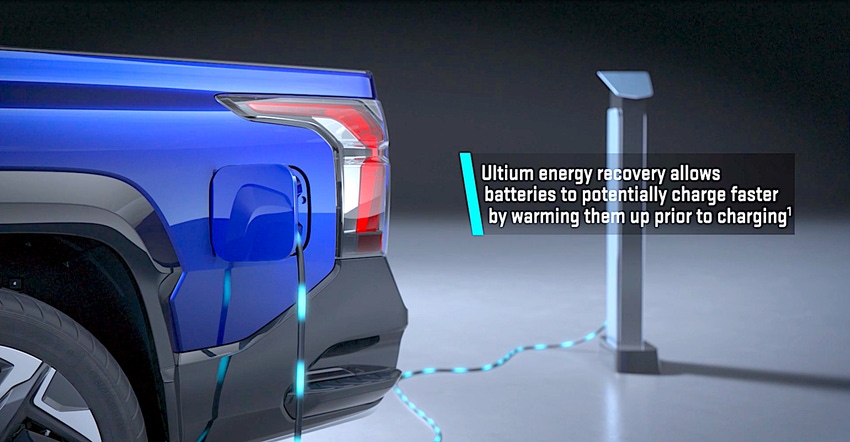GM Ultium Heat Pump Delivers EV Efficiency Gains
General Motors Ultium Energy Recovery heat pump system promises a 10 percent bump in driving range for its EVs.

One part of General Motors’ Ultium modular EV component strategy is a thoroughly integrated heat pump system dubbed the Ultium Energy Recovery system that simultaneously provides cabin temperature comfort, battery thermal conditioning, and electric motor cooling.
Just as GM’s new generation of EVs, which launched with the Hummer EV, BrightDrop Zevo 600 commercial van, the soon-to-be-released Cadillac Lyriq, and the Chevrolet Silverado pickup truck, employ modular parts such as electric motors and battery modules, so it also features a sophisticated heat pump system as standard equipment.
Compared to conventional electric resistance heat, this heat pump delivers efficiency that is between 4 and 5 times as efficient, reported project manager Lawrence Ziehr in a Zoom call with reporters. This improved efficiency can yield a 10 percent boost to the real-world driving range, he said.
Ziehr differentiated between EPA test cycle rating and real-world driving, saying that the heat system’s advantages will be more apparent to customers in the real world than to the EPA’s testing computers. “When you are balancing customer comfort in a non-EPA driving cycle situation, that’s where the system shines,” he said.
The balance he’s referring to is the calculation now familiar to EV drivers in cold climates, where they eye the projected remaining driving range versus the distance to their destination and adjust the cabin temperature to ensure that they don’t drain the battery short of that target due to use of the heater.
The Ultium heat pump is “more sophisticated than even the advanced geothermal heat pump you’ll find in homes,” Ziehr said. Ordinary heat pumps exchange heat with the atmosphere, which leaves them struggling in very hot or very cold conditions. The Ultium heat pump has a heat exchanger with the electric motors’ cooling circuits so that waste heat from the motors keeps the heat pump working effectively down to -30 degrees, he explained. “Other heat pumps die out at those temperatures,” he asserted.
In addition to connecting the motors’ heat with the cabin temperature, the heat pump also controls the temperature of the Ultium battery pack. In winter weather, it is important to warm the pack in preparation for a DC fast charge to have the minimum charge time. Drivers will be able to do this manually, or they can enter an expected charge station stop in the navigation system so the car will be alerted to the need to have the battery thermally pre-conditioned before arriving at the charger.
Similarly, when high-performance is requested, such as through the Hummer EV’s “Watts to Freedom” maximum-acceleration mode, the heat pump optimizes the temperature of both the batteries and the motors for maximum performance over a short burst of acceleration
The system can not only warm the battery in winter, but it can also cool it in hot weather, Ziehr added. “Controlling battery temperature is paramount for life [of the pack],” he said.
The heat pump-to-motor heat exchanger circuit employs complex valving for both the heat pump side and the motors’ oil-cooling systems that are comparable in function to Tesla’s Octovalve, which EV engineering analyst Sandy Munro points to as the current benchmark for engineering excellence.
These valve’s design and function is the result of hard work by GM’s Ultium engineering team, boasted GM’s director of electrification strategy, Tim Grewe, during the same Zoom call with media. “It is really complex fluid dynamics that takes a lot of expertise and know-how,” he said.
GM points out that the company’s experience with EV heat pumps stretches back to its EV1 electric car of the 1990s. That car became the infamous subject of the 2006 film, “Who Killed the Electric Car?” following the conclusion of the company’s experiment with a small fleet of the EVs that were rented to customers at heavily subsidized rates for the purpose of gaining experience with the technology.
If GM in fact killed the electric car, that would come as surprising news to the many drivers currently using EVs daily, as well as to the engineering teams at GM who toil on the many upcoming vehicles using some mix-and-match matrix of components from the Ultium toolkit. But no matter how many, or which, of the various modules are used, all Ultium-powered vehicles will feature this heat pump system.
About the Author(s)
You May Also Like





